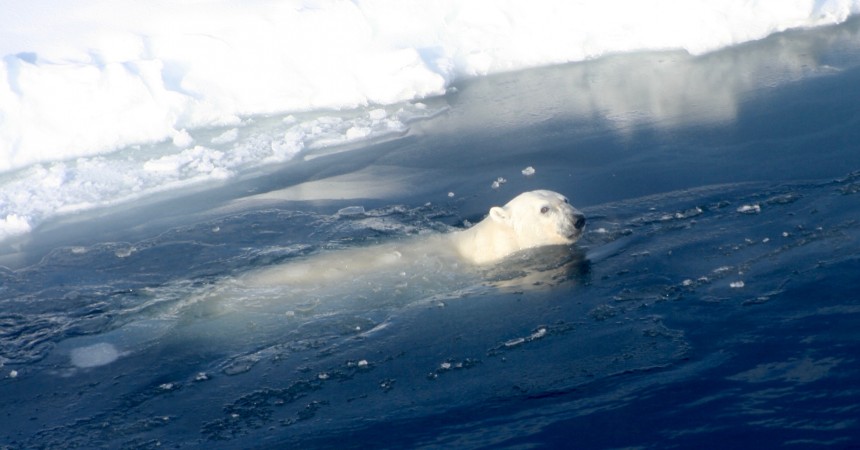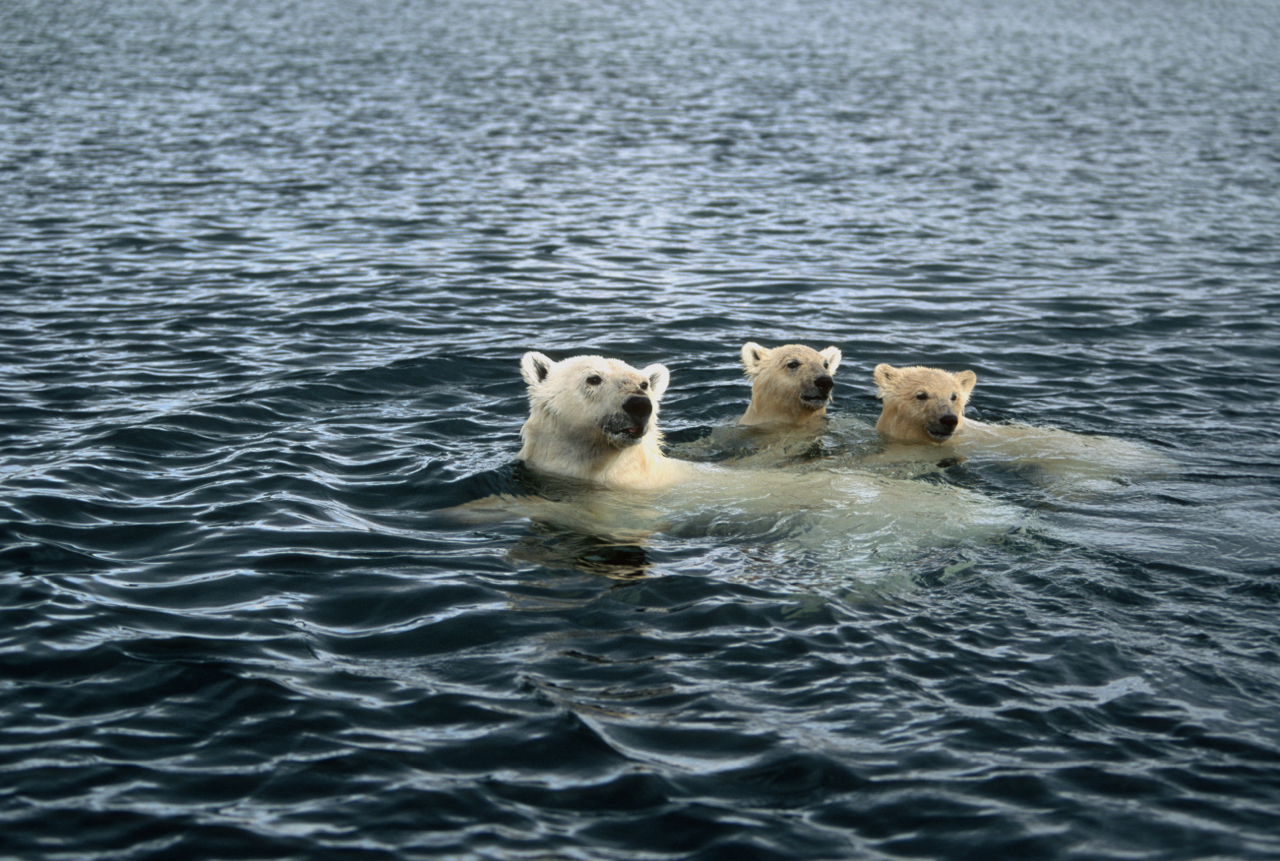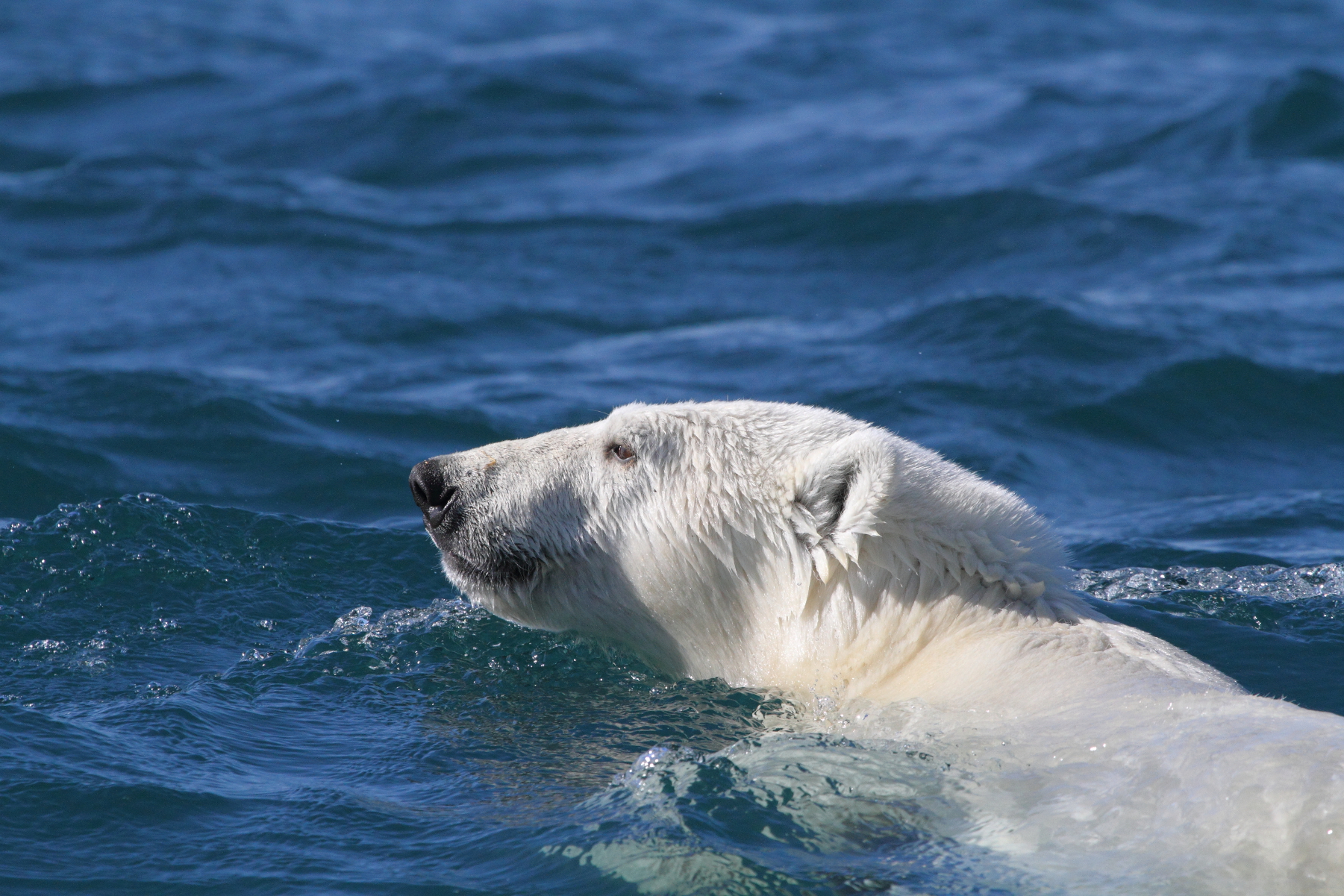A study undertaken by scientists from the University of Alberta and Environment and Climate Change Canada to understand swimming behavior in polar bears is showing an increase in this behavior related to changes in the amount and location of summer sea ice. Lead author Nicholas Pilfold, now a postdoctoral fellow at San Diego Zoo Global, said “the pattern of long-distance swimming by polar bears in the Beaufort Sea shows the fingerprint of climate change. Swims are occurring more often, in association with sea ice melting faster and moving farther from shore in the summer.”
The study, published in a recent issue of the journal Ecography, was accomplished using satellite-linked telemetry-tracked populations of polar bears in the Beaufort Sea and Hudson Bay. Results of the study show an increase in swimming associated with reduced ice, due to climate change. In 2012, the year in which Arctic sea ice hit a record low, 69 percent of the tracked adult females in the Beaufort Sea swam more than 31 miles (50 kilometers) at least once.
“Recent studies indicate that swimming may be energetically costly to polar bears,” said Nicholas Pilfold. “Given the continued trend of sea ice loss, we recognize that an increased frequency in the need to engage in this behavior may have serious implications for populations of polar bears living around the Arctic Basin.”
Swimming frequency and other movement factors varied between individual bears and showed differences dependent on age, sex, body size and geographic features of the region. Swims occurred more frequently in the Beaufort Sea than in Hudson Bay. Researchers noted that females with young cubs tended to swim less to avoid submersion of youngsters in cold waters, while lone subadults swam as frequently as lone adults. The longest recorded swim in the study was by a subadult female that traveled over 249 miles (400 kilometers) in nine days.







